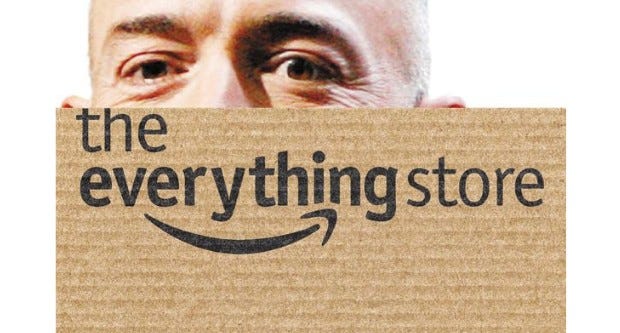Case Study: How Amazon’s Flywheel Effect Revolutionized E-Commerce
Amazon’s flywheel effect redefined business strategy, proving that relentless focus on customer experience and long-term compounding can turn even a low-margin industry into a trillion-dollar empire.
Background
Founded in 1994 as an online bookstore, Amazon rapidly expanded into a global e-commerce giant. By the late 1990s, CEO Jeff Bezos recognized the challenges of competing in an industry with razor-thin margins. Traditional retail models prioritized short-term profits, but Bezos envisioned a self-reinforcing growth engine—the flywheel effect—to dominate the market. Introduced in his 1997 shareholder letter, the flywheel became the cornerstone of Amazon’s strategy, transforming it into a $1.7 trillion company controlling 40% of U.S. e-commerce by 2023.
The Challenge
E-commerce in the 1990s was marked by:
Low Margins: Price wars eroded profitability.
Fragmented Competition: Thousands of retailers vied for market share.
Customer Skepticism: Online shopping lacked trust and convenience.
Amazon needed a sustainable model to scale without relying on short-term profits.
The Strategy: The Flywheel Effect
Bezos’s flywheel model created a virtuous cycle where each component fuels the next:
Customer Experience: Invest in selection, convenience, and speed (e.g., fast shipping, easy returns).
Traffic Growth: Enhanced experience attracts more customers.
Seller Attraction: High traffic draws third-party sellers, expanding product variety.
Lower Prices: Scale and competition drive down costs, improving customer experience.
Repeat: Lower prices and greater selection attract even more customers, restarting the loop.
Key Initiatives Driving the Flywheel:
Amazon Prime (2005): Free shipping and streaming services boosted loyalty. Prime members spend 3x more than non-members.
Third-Party Marketplace (2000): By 2023, 60% of Amazon sales came from third-party sellers, paying fees that funded further growth.
AWS (2006): Profits from cloud services subsidized retail investments, sustaining the flywheel.
Fulfillment Centers: Built 2,000+ warehouses globally, enabling 1-day delivery for Prime members.
Implementation
Long-Term Focus: Amazon prioritized reinvesting profits into growth over quarterly earnings. For example, it operated at a loss for 9 years while scaling infrastructure.
Data-Driven Decisions: Used customer behavior analytics to optimize inventory, pricing, and recommendations.
Relentless Innovation: Launched Kindle (2007), Alexa (2014), and AI-powered logistics to stay ahead.
Results
Market Dominance: 40% of U.S. e-commerce sales, surpassing Walmart, eBay, and Target combined.
Revenue Growth: From 148M(1997)to148M(1997)to574B (2023), driven by flywheel momentum.
Global Scale: 300M+ active customers and 20M+ sellers worldwide.
Competitive Moat: The flywheel’s compounding effect made Amazon nearly unbeatable in core markets.
Key Takeaways
Compound Growth > Short-Term Profits: Sacrifice immediate gains to build an unstoppable system.
Customer Obsession: Every decision should start with improving customer experience.
Leverage Ecosystems: Third-party sellers, AWS, and Prime create interdependencies that reinforce the flywheel.
Scale Fuels Efficiency: Lower costs and prices through volume, not just operational cuts.
“Your margin is my opportunity.”
—Jeff Bezos, Amazon Founder
Source
Amazon’s 1997 Shareholder Letter | Amazon Annual Report (2023)




